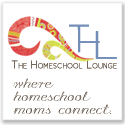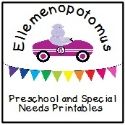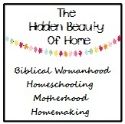I've been wanting to do a comparison post between two reading curriculums that I have used--Teach Your Child to Read In 100 Easy Lessons (100 EZ) and Ordinary Parent's Guide to Teaching Reading (OPG) for a while now. There are things I like about both, and things I don't like as much about both. Both are great curriculums, but are also distinctly different from one another. I tried to add links to both curriculum choices, but for some reason blogger isn't letting me. Anyway, you can easily do a search on Amazon.com!
I'll start with OPG. We switched to this book after several months in 100EZ with Little Bean.
Some thoughts that are neither pros nor cons in my view:
--OPG is an explicit phonics program. Each lesson teaches a new rule, or even several rules, and then follows with sample words and sentences
--OPG has no pictures or elaborate stories. The author feels that pictures distract from the text and encourage word guessing. The "stories" are really just a few sentences that are somewhat related to one another, but would not constitute a story in my mind.
Pros:
--OPG has 230 lessons which take the child from no knowledge of the alphabet all the way to a fourth grade reading level
--OPG is scripted, so the parents knows exactly what to say and when
--OPG teaches words in groupings. For example, our lesson today went over two three-consonant blends--"scr" and "str". The sentences were based on practicing those blends, but also incorporated words from previous lessons
--OPG suggests simple games at the end of each lesson. Sometimes they are as simple as spelling the new words with letter tiles; other times it's other types of games, but they are always optional
Cons:
--One of my biggest beefs with this curriculum is the pure awkwardness of many (I'll say most) of the sample sentences. I kind of feel like since the author is trying to squeeze in as many practice words of one type into the sentence it comes off really strange.
Here are some examples:
From Lesson 55 on the digraph "sh": Shem shall shelf the ships in the shed and shut the Shell Shack Shop.
From Lesson 52 on the beginning blend "fr": Fred the frog will jump on the frill of the frock.
Honestly, pretty much every lesson my ds is asking me what something means, or he'll read an entire sentence and have no clue what it was about.
--Sometimes the lessons are a little too packed, other times they are too easy. For instance, Lesson 50 covered beginning blends bl, cl, fl, gl, pl, and sl and the sight word "of". Four or five practice words per blend and one sentence was all the lesson covered. Moving on, Lesson 57 covers only the digraph "ch". This lesson has 13 practice words and about 10 sentences, just for this one concept!
--Sometimes (and this may just be geographical differences) the pronunciations given make no sense to me and I have to disregard the rule completely. For example, in a recent lesson the digraph "wh", the book says that wh represents an unvoiced sound like the sound you would make when blowing out a candle. Words like whiff, which, and whistle fall into this category. For me, in this case, wh actually just says /w/ and the h is silent.
Moving on to 100 EZ:
Some general thoughts on 100 EZ:
--I personally really like this curriculum! But, my ds, who was my first child to read, never took to it. Oh, he was reading fine and progressing fine with it, but he just dreaded the lessons. Since we've switched to OPG, he has really turned a corner. Often times I find him pulling out his decodable readers in his free time. My dd, on the other hand, really likes this curriculum. She is 3 (4 in July), and is on Lesson 35. She never complains and loves her reading time. She pulls out her readers all the time too.
--100 EZ is a phonics based program (is not based on sight reading), but it's based on the Distar method, and does not teach explicit rules in the same way that OPG does. When a new sound is presented, it's presented with a special symbol or special font that resembles the regular letter, but has visual cues to make it easier for the child to see the sound as a unit. For example, the sound for "sh" is a lowercase s that is connected at the top to a lowercase h. The fact that they are connected is a cue in the child's mind to say those two letters together. A silent letter is written smaller than a regular letter, another cue for the child to remember not to say that letter when reading. Eventually, the child is weaned off of the special fonts and transitions to regular font by the end of the book. Neither of my children has any problem switching between regular decodable readers and the special font in this book.
Pros:
--100EZ takes your child from no knowledge of letter sounds to a 2nd grade reading level in just 100 lessons
--100 EZ teaches your child a variety of word patterns so that within a few lessons they are reading sentences and phrases with ease. For example, by Lesson 12, your child can read words like sad, mad, eat, meat, read, am, ram, see, and me. Instead of teaching only 3 letter cvc words, the book gets them started on more complex words right off.
--the sentences make sense and there are no instances of awkward phrasing
--100 EZ has lots and lots of review, and lots of different activities in each lesson. For example, while OPG basically presents the rule, gives practice words and then a practice sentence, 100 EZ has the following activities in each lesson: new sounds, word reading (review of old and new words), review of previously learned sounds, reading a story, reading the story again, comprehension questions and a picture to go along with the story, reading the fast way and word finding. There is a writing component in each lesson, but we don't do it. In the beginning lessons there is also a rhyming section.
Cons:
--After a while, the stories get really long (about a page), and for my ds, it was too much and the stories are what made him dread reading time
--this may not bother some, but for me it was a problem. Several times in the book the children are taught to read words like gun or hate (or even have stories related to these words about hunting or hating a certain thing--nothing too crazy, lol). We don't use those words in our house, so I had to make sure to preview each lesson and cover up unwanted words (or in some cases, skip the story).
All in all, both are great curriculum choices! My dd loves 100 EZ, and my ds likes OPG. Personally, I prefer 100 EZ, but I like that OPG takes the child to a higher reading level in one volume. So it's a toss up. What do you think? What do you use to teach your child to read?
Subscribe to:
Post Comments (Atom)





















7 comments:
I used 100 EZ with my ds when he was 4-5, and I'm currently using it with my dd(age 5). My ds is an excellent reader now, and my dd is progressing well, so I view the program as a success for us. However, I had to make some adjustments in lesson timing because of the same reasons you mentioned--my ds dreaded his reading lessons with this book, and reading the long stories twice in a row overwhelmed both of them. I solved this problem this way. With my ds, I did an entire lesson in one go, but I did it only 2x a week. He didn't forget anything, and it worked really well for him. With my dd, it has worked best to divide each lesson into 3 parts. I do everything up to the story the first day, read the story through once the 2nd day, and read it through the 2nd time the 3rd day. She hasn't lost anything by doing it this way--it just makes it less stressful for both of us, and she's learning really well. So I highly recommend this program, but I believe you should figure out how much your child can handle in one lesson and work out your own reading schedule to fit your needs. Also, don't make the same mistake I made--I tried the program first with my ds when he was 3, and I hadn't read the instructions yet! He wasn't getting it at all, and then I read the introduction and discovered I was teaching the sounds incorrectly. I waited half a year and restarted it with him. The way you teach the sounds is very important! If you follow the guidelines, it's a very easy program to use.
We use 100 easy lesson, I LOVE it! My oldest who is a 5th grader can read pretty much anything I give him. I know this is because of the solid foundation in 100 easy lessons. My other two are younger and we are working it through it now. My middle child (2nd song) who has some learning issues struggles the most but I cut the lesson into three parts. One day we do the sounds and words they introduce, second day we do half of the story and last day finish up the story. They do get long especially for a child who doesn't take to reading naturally or has learning issues. I have never seen the other program, maybe it could help my middle son, I will check it out.
Angela
my son, who just turned 3 yrs, is starting to show interest in reading and writing. Would you suggest 100ez? It sounds like it would be helpful... I'm not sure how to teach him without confusing or frustrating him.
Thanks,
Steph :)
Steph--you should enable your email in your profile so I can answer you directly! Does your son know all his letters already? It's a great help if they already know the letter sounds. Ds learned them from the Letter Factory dvd, and O has just picked them up randomly. Even if he doesn't know them, 100 EZ teaches all that, so it shouldn't be a problem. I would recommend it with the caveat that he may not like it, and you can always come back to it later on. We use the Bob Books as a companion (decodable readers), and those are great! Both mine started around 3.5 with 100EZ, and it is written for ages 3 to 5 years mainly. I've learned that the child must show a huge motivation to learn, otherwise it ends up not being all that fun.
My daughter is 3 years and 4 months old, and reads on the first grade level. What worked for us was Progressive Phonics. We have 100 EZ lessons, but I never warmed up to it - it seems to be designed for older kids. Progressive Phonics seem to have all the advantages of OPG, but the stories make sense, and it's completely free. I definitely recommend to have a look at it.
I am using OPG, although informally to date, meaning I have read the lessons myself and put together something fun to do with my two 4 year old sons with the concepts and words introduced.
I also have 100EZ Lessons but, for some reason, I really liked the OPG approach.
I am planning to start using OPG a bit more formally in a few weeks, after we return from vacation and settle back in. We'll see how it goes then. Both boys are able to decode cvc words so I think they are ready. We'll see. I have never made them sit down and learn something to date so it will be a whole new ballgame:), although I plan to keep the lessons very short and sweet (as sweet as possible) to begin with.
Hi, just wanted to first tell you that I'm new to your blog and am loving all of the great reviews and helps that you post. So thank you for that! :)
We use 100 EZ lessons. I personally really, really like it. My 6 year-old is plodding through it, but I'm seeing such great progress, we're not going to quit. I just don't push her too hard. I want her to enjoy reading and look forward to the lessons. Something else: I cover up the picture that goes with the story (and I colored the pictures, too!) until it's time to actually look at the picture. As much as my daughter drags through the lesson, she looks forward to seeing the picture.
My ds who is 5, is zooming through this book. I don't push him either, since he's only 5. He gets a little annoyed with the lessons, but because he can read pretty fluently without much help, he gets through the lessons quickly. He also likes seeing the picture at the end of the story (but he could care less if I colored the picture or not :) ).
I just like that the book does a lot of review, weans the child off of the symbols and fonts and also introduces punctuation. I don't have to think about those things -- they are written into the lessons. I also skip the handwriting lesson since we do something else for that.
Anyway, that's basically my experience. :)
Post a Comment